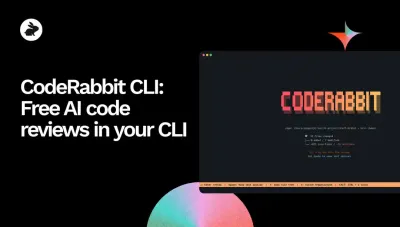Lintrule
A tool for large language models to do your code reviews.
code review large language models linting bug identification policy enforcement complianceTool Information
| Primary Task | Code reviews |
|---|---|
| Category | ai-and-machine-learning |
| Pricing | from $1 |
Lintrule is a command-line tool that utilizes large language models (LLMs) for conducting code reviews. It enables software developers to enforce policies that a conventional linter can't, and identifies bugs that automated tests might miss. It goes beyond typical 'Looks Good To Me' (LGTM) responses, saving a team's time in collaborative code reviewing. Lintrule allows users to write and configure rules in plain language, which lends reliability and clarity to code review processes. These rules can be used to prevent issues such as logging sensitive customer data that could lead to compliance concerns. The tool operates on code changes by default, and it can be set to check specific file types using a frontmatter include option. The tool also supports running code changes across various environments such as MacOS, Linux, and WSL. Installation involves running a script that can be fetched from the Lintrule website. On average, the time taken for review completion remains constant as Lintrule runs checks in parallel, regardless of the number of rules or files involved.
| Pros |
|---|
|
| Cons |
|---|
|
Frequently Asked Questions
1. What is Lintrule?
Lintrule is a command-line tool for conducting code reviews using large language models. It not only enforces policies that traditional linters can't handle but also identifies bugs that automated tests may overlook. It allows users to write and configure rules in plain language and applies these rules to conduct code reviews, thus improving code quality and efficiency.
2. How does Lintrule conduct code reviews?
Lintrule conducts code reviews by utilizing large language models (LLMs) to interpret and enforce rules defined by the user in plain language. It operates by default on code changes and can be configured to check specific file types. By running in parallel, it maintains a constant review completion time regardless of the number of rules or files involved.
3. What systems is Lintrule compatible with?
Lintrule is compatible with MacOS, Linux, and WSL environments.
4. How is Lintrule installed?
Lintrule can be installed by running a script fetched from the Lintrule website via the command line. This script is supported on MacOS, Linux, and WSL.
5. Does Lintrule integrate with platforms like GitHub?
Yes, Lintrule offers integration with popular platforms like GitHub, giving users the ability to streamline and automate their code review and enforcement processes.
6. Can Lintrule help improve code quality?
Yes, Lintrule can assist in improving code quality by leveraging a large language model to enforce rules that traditional linters can't manage, and to identify bugs that might be missed by automated tests. Users can write and customize rules in plain language, adding clearer context and objectives to the code review process.
7. How does Lintrule deal with false positives?
Lintrule acknowledges the chance of generating false positives and recommends users to write more specific rules to reduce their occurrence. If a rule causes a false positive, fixing the rule will likely prevent the same type of false positive from recurring.
8. Is there any cost associated with Lintrule?
Yes, Lintrule services come with costs that are typically estimated based on the number of lines of code changed. The pricing is $1 per 1,000 lines of code changed. However, the actual cost may vary depending on the specific usage and the scope of the project.
9. How can I write rules for Lintrule?
In Lintrule, rules can be written in plain language. Users can configure rules to their project's needs and add them to their codebase as shown in the example of the /rules/soc2.md file.
10. Can I apply rules to specific files in Lintrule?
Yes, Lintrule allows users to apply rules to specific files. Users can ensure that rules only run on certain files by adding the file paths to the frontmatter during rule configuration.
11. Does Lintrule identify bugs that other linters might miss?
Yes, Lintrule is designed to detect bugs that might be overlooked by other linters or automated tests, thus enhancing the robustness of code quality assurance.
12. Does the completion time for checks in Lintrule remain constant regardless of the number of rules or files?
Yes, regardless of the number of rules or files involved, the time taken for review completion remains constant in Lintrule as it runs checks in parallel.
13. How does Lintrule enforce policies?
Lintrule enforces policies by allowing users to write and configure rules in plain language. These rules can encapsulate any policy constraints or requirements which are then applied to the code under review.
14. Is it possible to customize checks and rules in Lintrule?
Yes, checks and rules in Lintrule are highly customizable. Users can write rules in plain language, specify which files the rules should be applied to, and set up the tool to operate on code changes by default.
15. How can the Lintrule dashboard be used?
The Lintrule dashboard allows users to log in and configure rules that are specific to their project's needs, offering a single point of management for rule definitions and policy enforcement.
16. How is Lintrule different from traditional linters?
Unlike traditional linters that primarily perform static analysis of code for style and error detection, Lintrule uses a large language model to conduct more complex reviews. It enforces more extensive policies, detects bugs that may go unnoticed by automated tests, and enables the writing of rules in plain language, making code review more comprehensive and context-aware.
17. What features make Lintrule a powerful tool for code reviews?
The features that make Lintrule a powerful tool for code reviews include the use of a large language model for conducting reviews, capabilities to enforce policies unmanageable by other linters, ability to find bugs often missed by tests, enabling users to write rules in plain language, and the capacity to perform multiple checks in parallel.
18. How are policies enforced that cannot be managed by other linters?
Lintrule enforces policies that cannot be managed by other linters by applying rules written in plain language. These rules can incorporate the nuances and complexities of the policies, which are then enforced by the large language model when reviewing the code.
19. How does Lintrule streamline the process of code reviews?
Lintrule streamlines the process of code reviews by taking advantage of large language models to conduct automated code reviews. It allows users to write rules in plain language and enforces these rules during the review, saving valuable time while improving code quality and efficiency.
20. What kind of support and documentation is provided for getting started with Lintrule?
Support and documentation for getting started with Lintrule are provided on their website. This includes instructions on how to install and set up Lintrule in a codebase, how to write and configure rules, and how to log in to the Lintrule dashboard. The website also offers a FAQ section that addresses common queries and concerns about using Lintrule.
Comments
Similar Tools
Related News

Kayvon Beykpour, the former head of product at Twitter, has unveiled Macroscope, a groundbreaking AI-powered tool designed to s...
@devadigax | Sep 17, 2025

CodeRabbit, a rapidly growing AI-powered code review startup, has raised $60 million in a Series B funding round, bringing its ...
@devadigax | Sep 16, 2025

Google has announced a significant breakthrough in the field of automated cybersecurity, revealing that its AI-powered bug-hunt...
@devadigax | Aug 04, 2025

GitHub Copilot, Microsoft's AI-powered coding assistant, has officially surpassed 20 million all-time users, a stunning milesto...
@devadigax | Jul 31, 2025
 AI Tool Buzz
AI Tool Buzz
 HOJI AI
HOJI AI